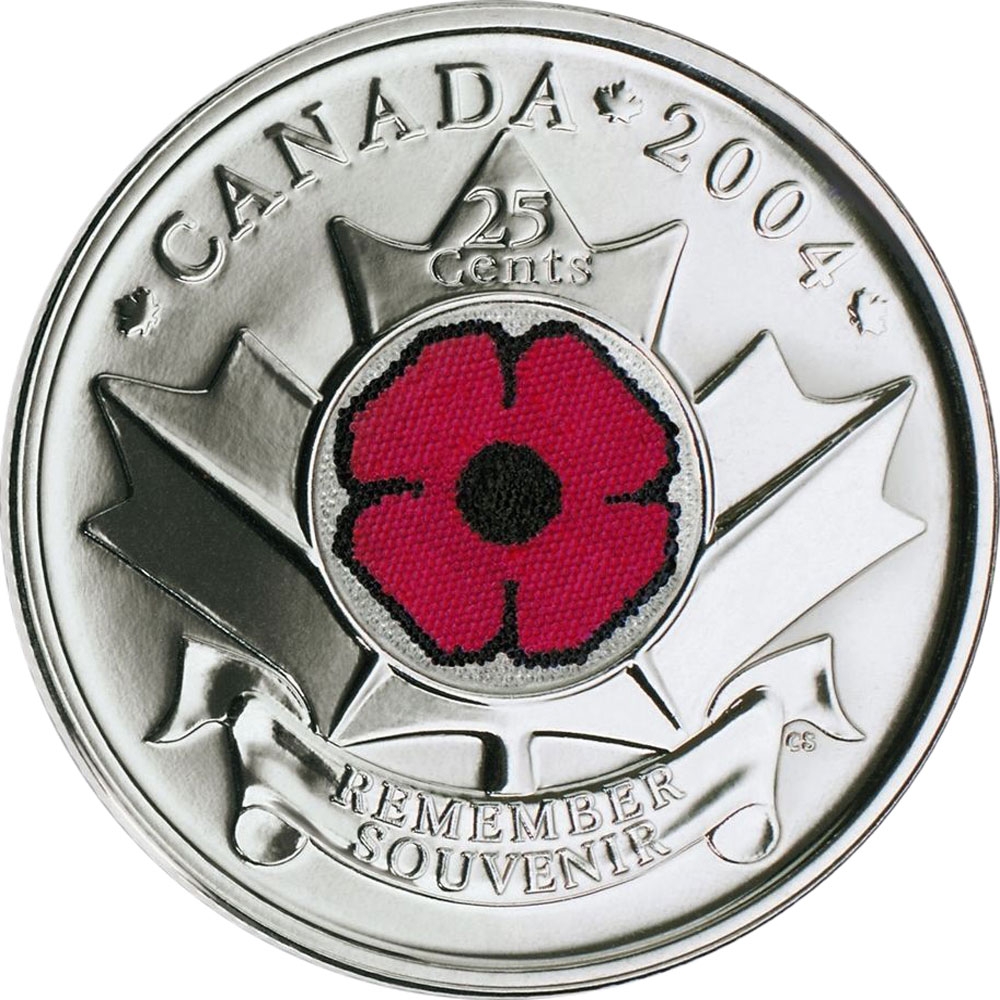You are about to finish your registration. Please check your mailbox (including spam folder). There should be a letter with a confirmation link. Check setting to make sure that your e-mail address is correct.
Send letter againDescription
Remembrance Day (sometimes known informally as Poppy Day) is a memorial day observed in Commonwealth of Nations member states since the end of the First World War to remember the members of their armed forces who have died in the line of duty. Following a tradition inaugurated by King George V in 1919, the day is also marked by war remembrances in many non-Commonwealth countries. Remembrance Day is observed on 11 November in most countries to recall the end of hostilities of World War I on that date in 1918.
The red poppy stamped on the reverse with pressurized ink and a fluorescent security coating was the world’s first colored circulation coin and quickly became a collector’s item. The coin was later named Most Innovative Circulation Coin at the Mint Directors' Conference (MDC) in Paris, France.
In an isolated incident in the United States these coins were briefly reported as a possible 'spy tool' by some US Defense Contractors unfamiliar with the odd-seeming coin and raised espionage warnings until the situation was clarified.
Obverse

|
Fourth portrait of HM Queen Elizabeth II, when she was 77 years old, facing right and surrounded with the inscription. ELIZABETH II D·G·REGINA |
|---|---|
Reverse

|
Depicts a red remembrance poppy in the middle of a maple leaf surrounded by the legend. CANADA 2004 |
| Edge |
25 Cents
4th portrait
KM# 510 Schön# 533.1
Characteristics
| Type | Commemorative Issue (Circulating) |
| Material | Nickel Plated Steel |
| Weight | 4.4 g |
| Diameter | 23.88 mm |
| Thickness | 1.58 mm |
| Shape |
|
| Alignment | Medal |
| Mint |
Royal Canadian Mint (P)
|


_Pounds_5/2017_13.10.2017_21.51-125.jpg)
_Pounds_5/2017_13.10.2017_21.51_01-125.jpg)
_Pounds_5/2017_14.10.2017_00.45-125.jpg)
_Pounds_5/2017_14.10.2017_00.45_01-125.jpg)
_Pounds_5/2017_14.10.2017_00.50-125.jpg)
_Pounds_5/2017_14.10.2017_00.50_01-125.jpg)